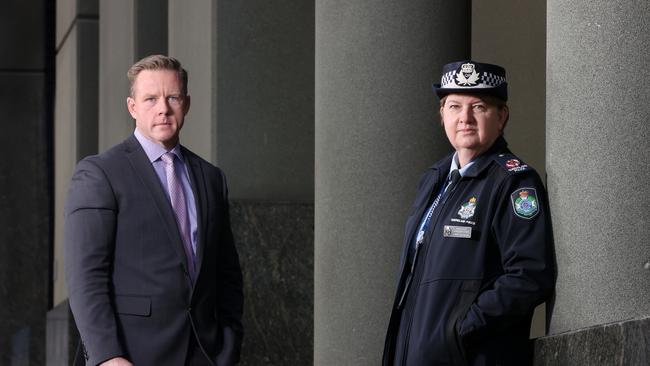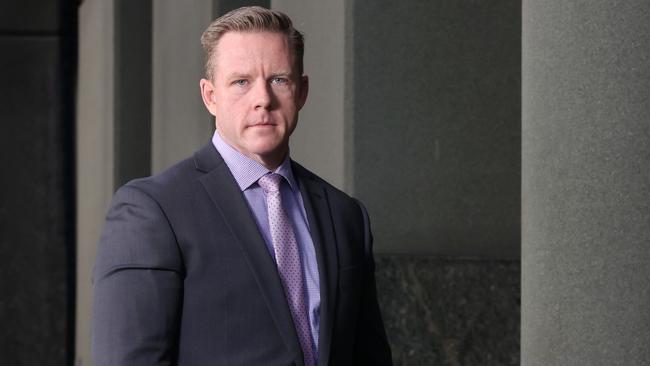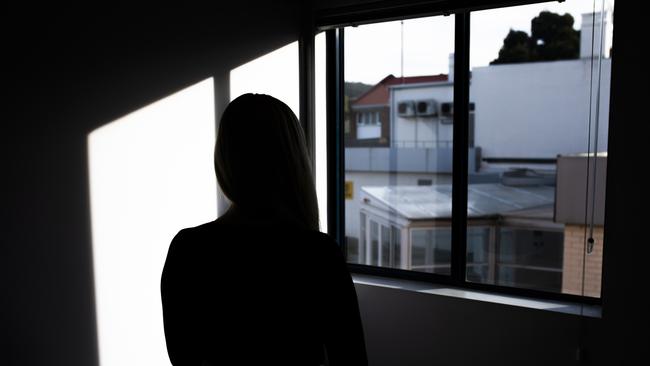Gold Coast crime: Crowding issues at detention centres amid youth crime crackdown
Authorities are confident they can meet the demand of youth criminals despite a youth justice director confirming incidents of crowding issues at detention centres.

Police & Courts
Don't miss out on the headlines from Police & Courts. Followed categories will be added to My News.
JUVENILE detention centres are operating at near capacity amid a youth crime crackdown, but authorities are confident they can meet demand.
Youth Justice senior executive director Michael Drane confirmed on Thursday there had been a “few minor occasions” in which children spent longer in watchhouses because of crowding issues at detention centres.
It is not known whether any instances occurred on the Gold Coast.

Mr Drane said the state’s three centres were operating at capacity or near capacity.
In 2019, the government came under fire as overcrowding in detention centres led to children spilling into watchhouses. The police union at the time said watchhouses had been turned into mini-prisons.
It led to laws aimed at keeping fewer children in custody.
“We’re very much across those issues, and obviously look to mitigate those as soon as they occur,” Mr Drane said of the incidents.
“If they’re remanded in custody then they’re typically remanded (in a watchhouse) until such time as they can be moved to a detention centre.
“It’s not unusual for young people to be held, especially in regional locations, until travel can be co-ordinated to a detention centre given there’s only three in the state.”

Mr Drane said since 2015 there had been a 33 per cent increase in capacity at detention centres. There are 112 beds at Townsville’s Cleveland Youth Detention Centre.
A third facility opened in the state this year.
“ … because population, modelling and those things told us that we needed to plan for additional capacity, but certainly the changes to the bail legislation have needed that capacity,” Mr Drane said.
The Bulletin on Thursday revealed more children were being remanded in custody, and for longer, since the introduction of new tough youth justice bail laws in April.
Asked if there was a concern that more children could be kept in watchhouses for longer periods with increased remand rates, Mr Drane said: “Look, that’s always a concern, for any system. I think any jurisdiction has those concerns. It’s not a static number of young people held at any one time. When young people come to the end of their sentence … they exit detention.
“To date we’ve kept pace with the demand ... so we haven’t had that concern materialise.”
Mr Drane said numbers in detention centres fluctuated and it was not uncommon to see more children behind bars at this time of year.
Revealed: Number of teen crooks being kept behind bars
TEEN crims are being kept in custody more often, and for longer, in a youth crime crackdown – but a new taskforce boss wants more to be community-based and fitted with electronic trackers.
Almost half of the kiddie crooks whose bail is refused by police on the Gold Coast are remaining behind bars, or have plead guilty to an offence, new police figures show.
The statistics follow the introduction of tougher youth justice laws in April.
Police have said most children who commit crimes do not offend again, but a hardcore group of about 10 per cent continually break the law – with social media fuelling the cycle.
And while more children were being kept in custody, Youth Justice Taskforce boss Assistant Commissioner Cheryl Scanlon said she wanted more eligible teens to be given the opportunity to be fitted with electronic monitoring devices (EMDs), which are being trialled.

Only two devices have been fitted across the state and have not been used on the Gold Coast.
“I’d like to see more young people given that opportunity,” Ms Scanlon said, noting it was a decision for the courts and those determining whether a child was suitable.
“It’s only a small trial, it’s only a small cohort. But it is for 12 months for 16 and 17 year olds.
“I would rather see a child in the community being supported by their family or a significant other with an EMD on compliance than in a watch house or detention.”
Last month it was reported the city had “had enough” amid spiralling car theft numbers, and a spate of teen arrests.
At one point last month, more than a dozen juveniles were involved in the theft of vehicles in five days. In Palm Beach alone, 15 cars were taken in a two-week period.
In the nine months to the end of September, Gold Coast police recorded 1881 unlawful use of a motor vehicle offences, well above the 1760 for the same time last year. In 2017, it was 1402.
Queensland Sentencing Advisory Council data shows the 14-to-18 age bracket accounted for more than half of all car thefts between 2005-2020.

It has prompted some suburban residents to arm themselves and instances of vigilante justice tracking offenders themselves on social media. One Gold Coast crime victim warned a youth criminal would target the wrong person at some point and suffer serious consequences.
The youth justice taskforce was established in February, on top of new laws targeting hardcore offenders – of which there are about 20 to 30 on the Gold Coast.
One of the changes was the presumption against bail for children charged with serious crimes while already on bail for an indictable offence.
New police figures reveal of the 539 youths arrested in the six months to October 31, there were 124 teens facing presumption against bail, requiring them to argue why they should be released.
Police say for 87 youths police bail was refused; 44 were remanded in custody or plead guilty, while 43 were granted bail by the courts.
The remainder were either granted bail by police, released without charged, diverted or given a court date.
Out of 91 youths who were not required to show cause for their release but had bail refused by police, 38 were remanded in custody or pleaded guilty and 53 were granted court bail.
Police say of the 324 other youths arrested, 55 were released without charge, while the remainder were dealt with in other ways, including police bail, cautions, diversions, and court notices.
Ms Scanlon said with the laws having the desired effect, attention had turned to breaking the cycle of reoffending, which she conceded was a “long and difficult process”.
“In almost all instances, these kids have complex social and family dysfunction which is going to require a more tailored approach built around the child and their family,” Ms Scanlon said.
“It’s important we do everything we can to intervene and work collaboratively to prevent others from joining this group, and to reduce that reoffending.

“While every effort will be made to give this cohort of young people an opportunity for change, there’s some young people we won’t have any impact on. They will go on to adult prison.
“I’m pleased with the progress on the Gold Coast, although I understand the community still feels the impact of youth crime, at times, and it’s not the time to be complacent on our efforts. It must move now to an increased level of intensity focusing on reducing reoffending.”
Youth Justice senior executive director Michael Drane said it was about “stopping that revolving door and that’s definitely what we’re seeing”, revealing there were more kids in custody compared to last year- and they were spending more time behind bars.
The intensive management involved government agencies and non-government services identifying a child’s risk factors and providing intervention, he said.
That could include assistance with education, organising a health referral, or making contact with the co-responder teams to ensure bail compliance.
“It is a 360 degree plan to make sure every facet of that child’s life is structured, and we’re not leaving anything to chance that would enable them to fall off the rails and reoffend,” he said.
He said it was “early days” and they were “progressively rolling it out”.
Former Police Commissioner Bob Atkinson will review the changes.




